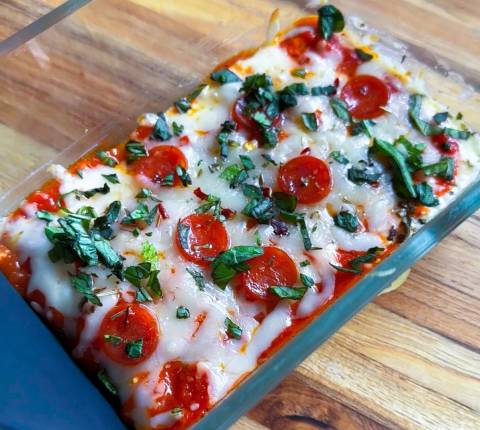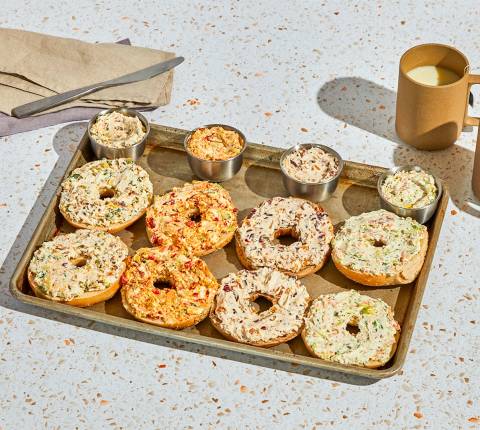Every January for the past 14 years, large oranges with wrinkled skin and a lump at the top have made their way into grocery stores across the United States. They’re called Sumo Citrus, named because of their little top knot, which is said to emulate that of a sumo wrestler. Yet in the past five years, as Sumo Citrus has increased its distribution and continued to invest in marketing, the fruit has exploded in popularity, accumulating a following of hyper-loyal fans. People who know Sumo Citrus love Sumo Citrus, and that’s because this fruit is unlike any other.
First of all, Sumo Citrus’s soft, pliable skin makes them a breeze to peel. You might even be able to unravel an entire Sumo Citrus in one spiraled take. Unlike with other kinds of citrus, the juiciness of Sumo Citrus stays inside of the flesh, leaving your hands clean and dry (instead of sticky or oily) while you pull the segments apart. This no-mess experience makes Sumo Citrus great for on-the-go snacking, whether you plop one in your gym bag or bring a few on a flight.
As for how they taste? Bite into a Sumo Citrus segment and your mouth will flood with a sweeping sweetness that’s more reminiscent of candy than fruit. They’re tart in a calm way, an ideal balance of sour and sweet. (On average, Sumo Citrus scores a 14 or higher on the Brix scale, which indicates sweetness by measuring the amount of sugar in a liquid. In comparison, navel oranges typically score between 10 to 12.) When you eat a Sumo Citrus, you’ll also notice that there aren’t any seeds getting in your way. That’s right, in addition to all of its other unique attributes, Sumo Citrus is seedless.
The other thing that sets Sumo Citrus apart is its cult-like following, made up of individuals who have been known to blast their love of the fruit all over social media. Sumo Citrus groupies even include celebrities like Jenna Fischer and Eva Chen.
According to Sunnia Gull, Vice President of Marketing at AC Foods, which owns Sumo Citrus, the Sumo Citrus lifestyle goes well beyond eating. “We see consumers creating art with Sumo Citrus. We see consumers sending us recipes or cocktails they created using Sumo Citrus,” she says. “We'll get pictures of hundreds of PLU stickers all over a refrigerator for every piece of fruit they had in the season. There’s just this organic passion.”
It all started in the 1970s, when the Japanese Department of Agriculture first cultivated the fruit as part of a government research program. The end product, referred to as the “dekopon” in Japan and “hallabong” in Korea, became known in both countries as the ultimate citrus: It had the sweetness of a California orange but the easy-to-peel quality of a satsuma mandarin.
In 1998, a citrus farmer in the U.S. imported dekopon seedlings and later sold the rights to Suntreat, which AC Foods now owns. Suntreat growers worked to answer questions like: How do we grow this fruit? Where do we grow this fruit? Once it’s grown, how do we pack this fruit so that it doesn’t get damaged? In 2011, the U.S. version of the dekopon, a.k.a. Sumo Citrus, hit stores.
What took so long? There was an initial waiting period because it takes four to five years for Sumo Citrus trees to bear fruit. And then, once the citrus starts to blossom, there’s a whole routine to ensure that consumers have the best experience possible: First the trees are pruned to make sure there’s enough space for the fruit to grow. Once the fruit is harvested — by hand — it’s put into something called an “air ride trailer” so that it’s not jostled around too much on the way to the packing facility. It’s then floated into the facility on water to further protect against damage before being tested for quality (think sugar content and acid levels) and packed by hand.
“This is the most pampered fruit you can think of,” Gull says. “I would say Sumo Citrus is handled in a very similar capacity [to stone fruit] because of the sensitive nature of the fruit itself.”
It takes less than a minute to eat a Sumo Citrus, but the time and effort needed to cultivate this fruit heightens their allure — and justifies their steep price tag of around $3-4 per fruit. The season only lasts between January and April, so get your Sumo Citrus while you can.






